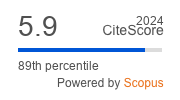Article | Open Access
Mapping and Measuring Listening in Public Communication Settings
| Views: | 2878 | | | Downloads: | 2233 |
Abstract: Scholars have made advancements in how to interpret, with detailed measures, the different characteristics and levels of distinct listening practices used by individuals when they are deliberating (Scudder, 2020, 2022). However, listening is not only a practice that occurs directly, but also a broader phenomenon that occurs across the public sphere (Bächtiger & Parkinson, 2019; Ercan et al., 2019). Public discourse occurs across hybrid media systems (Chadwick, 2017) in complex discursive exchanges (Maia et al., 2023) as networks of publics interact (Bruns, 2023). Such complexity imposes challenges for research to properly understand listening at a macro level. In this article, I present how to map and measure listening at this broader level. I reconstruct the discussion on listening as a normative foundation for political communication, from which we derive three key listening elements: attentiveness, openness, and responsiveness. I outline how listening is measured in direct interactions, to then explain how it can be assessed in public communication and mediated interactions, from the perspective of who listens, who is (or is not) listened to, and the actual listening acts.
Keywords: deliberative democracy; deliberative system; digital publics; listening; political communication; public sphere
Published:
© Tariq Choucair. This is an open access article distributed under the terms of the Creative Commons Attribution 4.0 license (http://creativecommons.org/licenses/by/4.0), which permits any use, distribution, and reproduction of the work without further permission provided the original author(s) and source are credited.


